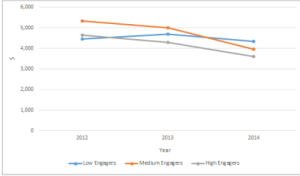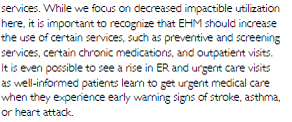In keeping yet again with the Koop Award tradition of bestowing awards upon themselves, the 2015 award went to one of Ron Goetzel’s own clients, McKesson. Curiously, not one but two other Koop Award sponsors (Alere and Vitality) are also listed as McKesson wellness vendors. This new record for undisclosed Koop sponsor self-awarding would make Nero proud.
And in keeping yet again with the Koop Award committee’s tradition of not noticing invalidating mistakes, none of what you are about to read — not one single invalid, mathematically impossible or self-contradictory datapoint that were all self-evident — was noticed by any of the Koop Award Committee members. They saw nothing. Our previous Koop Committee posting, entitled Koop Award Committee Meets Sergeant Schultz, seems presciently titled indeed.
Highlights of Risk Reduction and Wellness Activities
McKesson employees attended 160,000 Weight Watchers meetings. McKesson claims their employees collectively lost 24,000 pounds. That’s about 2.5 ounces lost per meeting for all attendees combined.
So if 10 people attended the average meeting, literally the amount of weight each lost (0.25 ounces) could be accounted for by walking to and from the meeting room, plus maybe a sneeze or two. Here’s a surprise: Weight Watchers has been a total failure in the corporate weight control market. Truven and McKesson must have missed this memo.
Oh, and did we mention that this weight-loss figure is self-reported, doesn’t count dropouts, and apparently contradicts McKesson’s own screening results — in which employees actually gained weight? (See below)
As the chart below shows, McKesson showed roughly a 2% decline across all risk factors, in the half of the company willing to be measured. The other half of the employee population declined to participate despite massive incentives. This is typical because employees hate wellness so much that even the biggest bribes can’t generate participation. So that 2% risk reduction amongst the 50% of repeat participants means – optimistically assuming the half who dropped out or didn’t participate stayed the same risk-wise – a 1% reduction in risk factors for McKesson as a whole.
Some other curiosities about this chart below that no one noticed. First, only 1% of its employees have an “elevated” risk of being a problem drinker, not bad for a company that used to be in the liquor distribution business. By contrast, the rest of the country’s alcoholism rate is 4.7% (women) or 9.4% (men) — and that’s an actual diagnosis of alcohol use disorder, not simply “elevated” risk.
Second, despite 160,000 Weight Watchers meetings and the 0.25 ounces each participant lost, the average employee who bothered to show up twice to be weighed-in actually gained weight. So which is it? Did they lose weight or gain weight?
Answer: they gained weight. Participants always outperform non-participants, and when you recombine the two groups, you always show that performance by participants is a misleading indicator of actual overall performance by everyone in total.
Third, despite McKesson’s claims of smoking cessation, note that a large chunk of employees refused cotinine (nicotine) testing. So 27% of employees self-reported tobacco use but only 9% of those willing to be tested were positive for tobacco use. 27% of employees admitting tobacco use might be a record for a company winning a wellness award. It’s about 9 points higher than the national average.
Finally, McKesson — reading datapoints off this very chart — claims a 9% reduction in risk, using the simple expedient of ignoring the people whose risk factors increased. This fallacy is the classic way to overstate savings. We call it “Lake Wobegon meets wellness” because everyone improves in this calculation. Still, we’ve never seen evaluators simply ignore the people getting worse when the data was right in front of them like this.
The Koop Committee reviewers somehow ignored or overlooked all of these things, and yet still they wonder why they are known as the Wellness Ignorati. Ah, well, as Tom Friedman wrote: “We wouldn’t be human if we didn’t ignore facts that dash our hopes upon the cliffs of reality.”
This 1% risk reduction across the population generated more than $13,000,000 in gross savings. McKesson’s graph below shows it spends about $4000 for each of its 45,000 eligible adults—or roughly $180,000,000 overall (excluding dependents). That means a 1% risk reduction creates a 7% spending reduction.
Using that logic, a 14% risk reduction would save 14 times as much–or $180,000,000, enough to wipe out all of McKesson’s healthcare spending, using the McKesson/Goetzel math.
The Dog that Didn’t Bark in the Nighttime
What makes this even more of a head-scratcher is that most people and organizations on this award committee – and a large number of the vendors and consultants involved in McKesson – also produced the HERO Outcomes Guidelines Report, which is quite insistent that the wellness-sensitive medical event rate (“potentially preventable hospitalizations” as they call them) be tallied as the only indicator of wellness program success, since no other costs decline and probably actually increase:
And yet no one noticed this event rate wasn’t disclosed — despite the insistence of everyone on the committee in this HERO report that these events are the only element of cost reduced by wellness.
Had this rate been disclosed, Sergeant Schultz himself – or even a Koop Award Committee member — might actually have noticed that the decline (if any) in these events would account for roughly 1% of McKesson’s claimed savings from wellness, about $12/person/year. The other 99%? Those are what we call the “wishful thinking multiplier,” which is the basis for all savings reported by the wellness industry.








Yep they are at it again! – Great post – Dr. Jon
LikeLike
good stuff – pushed it out – Jon
LikeLike
You are right on the money unfortunately the wellness space has been hijacked by those more concerned with appearances than legitimate research and results.
Nepotism is alive and well though.
LikeLike
Well-stated! thanks for your comment
LikeLike
First-time commenter. I was waiting until I could say something to your standards for insights. Here goes: it seems like ALL the Koop Awards find trivial risk reduction but huge savings. The committee members never seem to wonder how such small changes in a population could lead to such high savings.
LikeLike
Excellent point. Worth waiting for. Indeed that seems to be their mantra. “Let’s look at risk reduction, ignore dropouts and non-participants, and get a few percentage points of risk reduction, or a few people to reduce risk. Then let’s pick a fairly random number for cost savings and overlook the fact that it couldn’t possibly be driven by the trivial risk reduction they achieved.”
LikeLike
[…] self-immolation published in the Journal of Occupational and Environmental Medicine. Hopefully the people who give out Koop Awards to their customers and clients will read this article, and finally learn that massive reductions in the cost of participants […]
LikeLike
Postscript: McKesson had its award removed from the Koop Awards website. It’s not there any more.
LikeLike